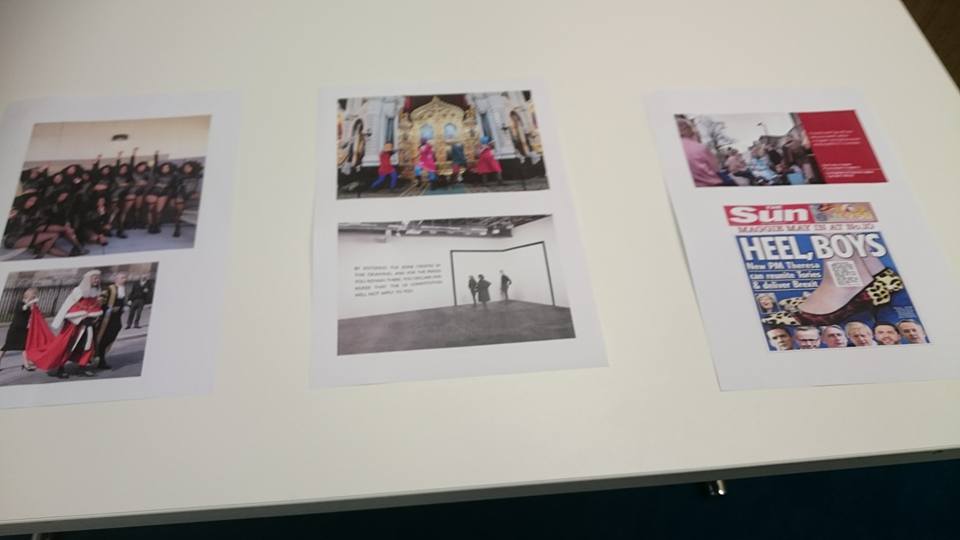by Karen Richmond, University of Strathclyde
As a socio-legal researcher, whose work focuses on the construction of forensic expertise, I am interested in exploring, and revealing, the particular series of laboratory translations which convert evidential material into textual and visual inscriptions. Each phase of the evidential trajectory (from the collection and stabilisation of trace samples to their conversion into graphical representations and statistical probabilities) is contingent, constructed, and shaped by contextual factors. Interdisciplinary legal research of this kind throws up many challenges: not least the task of digesting different vocabularies and negotiating disparate epistemologies. But it also offers valuable insights into the co-production of knowledge claims. Thus, my research has led to a growing appreciation of the role of visual artefacts and representations in mediating interdisciplinary communication.
Having developed an interest in visual media I was pleased to be able to contribute to the Strathclyde University Postgraduate Law Conference in October 2016. The committee were keen to deliver a conference that departed from the standard format, of streams organised around particular fields of legal research. This structure has many benefits, but on a small scale it can be limiting, insofar as researchers may be prevented from making connections with colleagues in other areas. Not infrequently, researchers working on interdisciplinary topics find themselves ‘shoehorned’ into a stream that doesn’t quite fit. Therefore, the Committee attempted to organise a conference which would bring researchers together across topical boundaries, using a series of images that would act as the focus for interdisciplinary conference streams.
The committee invited researchers from all areas of law to think about their research from a different perspective, by basing an abstract on one of six images. The ultimate aim was to encourage postgraduate researchers to free themselves from the limitations of traditional legal boundaries, and to stimulate them to explore new dimensions. Using visual cues as a departure point, the committee hoped to encourage researchers to take a less predictable journey through the legal landscape and to approach their research in fresh and imaginative ways.[1]
We were all agreed that it was a worthwhile approach, as it allowed researchers to interact and engage across disciplinary boundaries, making surprising connections and drawing fresh insights. However, we wished to go further: the challenge was to encourage participants to engage directly with visual research methods and to explore the potential for these methods within the legal field. Therefore, we decided that this should be the focus of an additional workshop.
We were grateful for the encouragement offered by Amanda Perry Kessaris, whose visual legal research blog continues to provide a useful collection of methodological resources. Having considered various approaches, we decided to invite participants to discuss the legal content – and to rework – a series of images drawn from advertising and the media.
We also chose to apply visual methods to text and adapted the literary ‘cut-up’ technique. We invited participants to use this technique as a means of deconstructing the text, editing and rearranging phrases to create spontaneous abstractions and conjunctions. Inspired by our conversation with the artist Carey Young – whose work focusses on the fields of law and commerce – we invited participants to re-work two foundational legal texts: the European Convention on Human Rights and the preamble to the US Constitution.
We were surprised by the energy and enthusiasm with which the participants approached the tasks and the session yielded some unexpected results. The text and images were refashioned into a contextual framework, opening up a space through which participants own narratives could enter: testimonies of gender and race, democracy and colonisation.
The process was not limited to brainstorming, nor to merely sparking discussion. Participants proved quite adept at drawing sensitive and meaningful insights from a reflexive process that was both subjective and aleatory; of reframing the purpose of these foundational documents, and placing them in a meaningful legal context.
The visual methods workshop also proved inspiring, insofar as it allowed participants to use their own perspectives and desires to enliven, and reaffirm, the aspirational nature of these key legal texts. It provided an excellent indication of the power of visual research methods to enact the world that they describe and – as novice researchers – the experience has motivated us to explore these methods further, and to broaden our repertoire of teaching and methodological skills.
[1] The approach was inspired, to some degree, by Sionaidh Douglas-Scott’s Law after Modernity, which is richly illustrated and makes extensive use of visual art to illustrate, and enhance, arguments.



Leave A Comment